This post may contain affiliate links. If you make a purchase through a link, I may receive a small commission, at no cost to you. These commissions help keep this website up and running, and I thank you for your support. Read my full disclosure here.
Notice a smell coming from your washing machine? Has the smell also transferred onto your clothes? It indicates the presence of bacteria and mould in your machine which can can pose a danger to you and your family’s health, especially those with sensitivities, asthma, diabetes and compromised immune systems. This can also lead to expensive repairs and even the need to replace your machine. It is important to discover the root cause of your washing machines odour in order to establish the best solution and strategies for both fixing it and preventing it from happening in the future.
What’s Causing Your Washing Machines Smell
1. The Washing Machine Drum
Surrounding the inner drum is an outer drum. It holds the water which washes in and out through the holes of the inner drum. In most models this outer drum is made of plastic, which could be contributing to the smell. Plastic is a porous material and the moulded shape of the drum, with its many grooves, creates the perfect damp environment for mould to grow and scum to build up. The same problem can occur with the plastic centre agitator of top loading machines and the inner drum if it is made of porous porcelain enamel. A sign that this has become a problem can be both a foul odour and black flaky, leafy residue on your laundry (that’s the mould, gross I know).
Machines with stainless steel drums have fewer issues because steel has a smooth hard surface that is easily cleaned and sterilized and is inert (unlikely to react to other substances). However, this does not make it immune to limescale build up.
Solution
If you can afford it, buy a washing machine with a steel outer drum instead of a plastic one.
Run a regular maintenance wash cycle through your washing machine using Glisten Washer Magic. The water temperature needs to be at a minimum of 60ºC (140ºF) to sanitise your machine.
After every wash, leave the washing machine door open, or at least ajar, to allow the drum to dry out and and prevent mould from growing.
What Can Happen to the Drum of your Washing Machine
2. Mould and Bacteria Is Growing in the Washing Machine Parts
If you don’t regularly clean all of the washing machine parts, mould and bacteria will eventually build up and cause your machine to smell.
Solution
Remove the detergent dispenser (check your manual if you are not sure how to do this) and place it in a sink of hot soapy water and scrub it with a small brush, an old toothbrush is perfect, until clean. Once you have removed the dispenser, you may see mould and grime in the cavity where the dispenser sits. Give that a good clean as well.
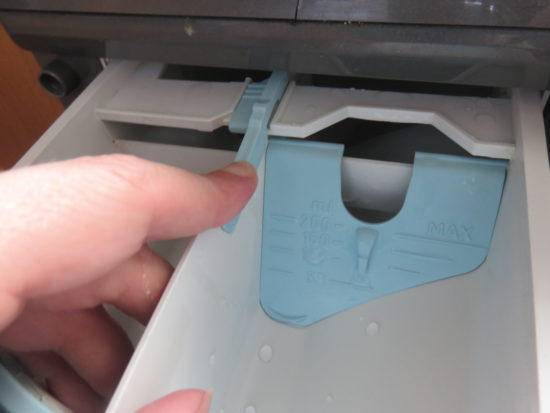
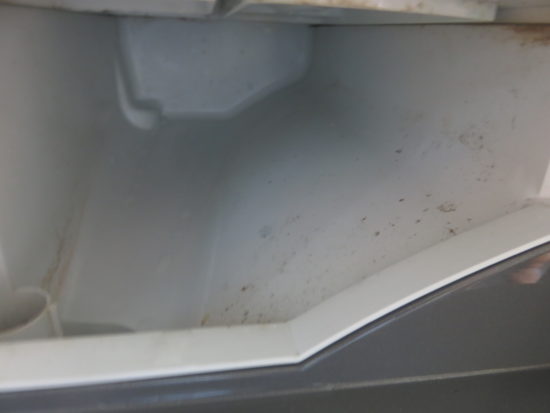
Clean out the washing machines filter. Before commencing, ensure that the machine has been disconnected from the electricity. The filter is usually at the bottom front of the machine behind the square plastic flap, or by the detergent dispenser on top loaders. Be careful when you open it, as water will come out, so lay down a towel and small container. I’ve included video instructions below.
After every wash, leave the washing machine door open, or at least ajar, to allow the machine to dry out and and prevent mould from growing.
3. Front Load Washing Machine Gasket
The gasket (the rubber ring around the door that forms a seal) of your front loading machine traps a lot of water in it and is the perfect place for mould to grow. Peel back the lip to look inside the rubber folds. You may be shocked at what you’ll find.
Solution
First, you need to give the gasket a good clean. Pack the rubber folds and cavities of the gasket with paper towels soaked in hydrogen peroxide. Hydrogen peroxide is safe to use for the environment because it simply breaks down into oxygen and water. Leave it to soak for 3 hours before wiping it clean. You may need to use a soft brush to gently scrub it. Run a rinse cycle through the machine to ensure all of the hydrogen peroxide is rinsed away.
To prevent it from getting mouldy again, after each wash, dry the rubber gasket and door seal using a clean old towel, rag, or paper towel after each wash. In addition, wipe it down with the hydrogen peroxide once a week to keep the grossness at bay. Always leave the door of the washing machine open, or at least leave it ajar, to allow the machine to dry out.
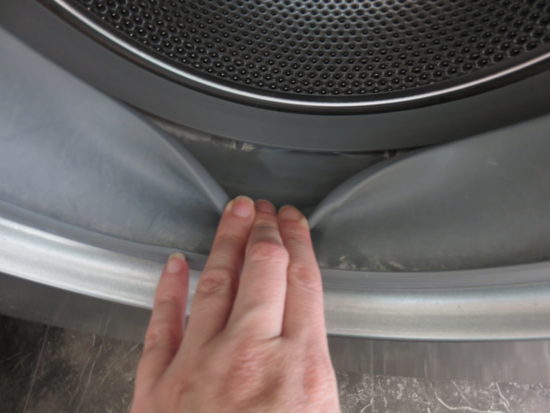
4. High Efficiency Washing Machines (HE)
HE washing machines are great for our water bills, but not so good at removing the soapy suds that occur during a wash cycle. When suds aren’t rinsed away properly, scum can build up between the inner and outer drums, clogging up your machine and its working parts such as the filters and pipes. This can produce a bad odour which is then transferred to your clothes each time you wash. Although manufacturers now produce specialised low suds detergents for HE machines, many people are not using them.
Solution
Use the correct dose of detergent according to your water hardness and load size. Resist the urge to overuse!
Use an HE low suds detergent. When choosing your laundry detergent, look for the HE logo on the label. Try Seventh Generations Free and Clear concentrate range of laundry detergents that come in both powder, and liquid versions. As well as having the HE logo, they are also free of optical brighteners, dyes, and synthetic fragrances.
If your machine is not thorough at rinsing suds, consider adding an additional rinse cycle to the end of your wash.
5. Backfilling
If you notice that your machine is partially refilling with foul water between washes, then it could be “back-filling”. This can occur when the machine has not been correctly installed and is consequently not draining properly. It causes the dirty water to flow back into your machine, creating a bad smell.
Solution: If you think that your machine is back-filling, check to ensure that it has been installed properly. Professional assistance from a trustworthy plumber may be required to rectify the problem.
6. Washing with Cold Water
In an effort to reduce energy bills, many people wash with cold water. Unfortunately this leads to a number of potential issues for you and your machine. Our clothing and bedding contain lots of body oils and grease. Although your laundry detergent might be good at removing these residues from your fabrics, unless you use hot water to rinse it away, this scum can settle on the inner drum of your machine.
Washing with low temperatures is also a problem when it comes to the germs and bacteria that build up in your machine. Unless you wash above 60ºC (140ºF), then the bacteria and germs will populate and spread to each load of washing that you do. This problem is further exacerbated when people do not separate their laundry i.e. wash their underwear with their tea towels (think faecal matter washed onto your tea towels which you then use to dry the plates you eat off!).
Solution
Run a regular maintenance wash cycle through your washing machine using Glisten Washer Magic. The water temperature needs to be at a minimum of 60ºC (140ºF) to sanitise your machine.
7. Laundry Products
In the UK, many people choose to use enzyme free (non-bio) detergents and this trend has begun progressing to other countries. This type of detergent must be used at higher temperatures, but many people use it at lower temperatures which results in residual scum.
Similarly, using liquid detergents, especially softener, can congeal and cause a soapy sludge to build up and stick to the inside of your machines drum. Also, liquid detergents don’t contain any bleach which usually helps to keep your machines drum clean. This problem is exacerbated by the tendency for people to use too much product and wash at lower temperatures.
Solution
Avoid using fabric softener. Try using a half a cup of white vinegar instead, its a really good natural softener alternative and won’t cause slime build up in your washing machine.
Choose powdered enzyme detergents like Seventh Generation Powder Laundry Concentrated over liquid non-bio laundry detergents.
Run a regular maintenance wash cycle through your washing machine using Glisten Washer Magic. The water temperature needs to be at a minimum of 60ºC (140ºF) to sanitise your machine.
8. Hard Water
Many of us live in areas with hard water. Hard water contains high levels of calcium and magnesium and when it is heated, limescale forms. As a result, the heating element in your machine can become crusted with limescale that can cause it to fail over time. When hard water comes into contact with the laundry detergent it forms lime soap, also known as soap scum. Both limescale and soap scum buildup on the surfaces they come in contact with, such as, the washing machine drums, pipes and hoses. It can shorten their lifespan and cause breakdowns. It can also promote microbial growth inside the machine.
Solutions
Combat limescale and soap scum by adding a water softening product such as Calgon Water Softener with every wash. Add the amount of detergent required for hard water as directed on the packaging.
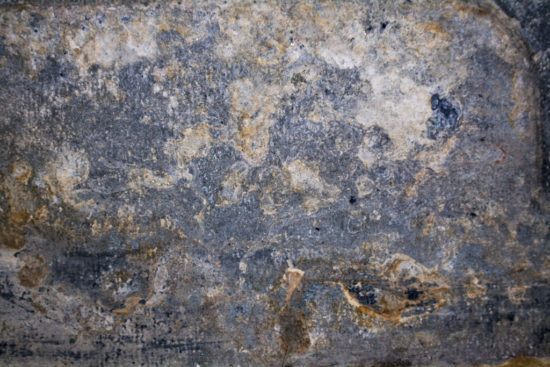
Additional Tips for Preventing Washing Machine Odours
- Don’t leave wet clothes sitting in the washing machine.
- Be aware that some washing machines can be prone to mold due to poor design and defects. It’s tempting to be the first to purchase the latest model, but sit back and let other consumers test them out first.
- When purchasing a new washing machine, look for ones that have self cleaning cycles, an air vent (usually in the back) and clips that hold the door open between uses to help keep it dry.
What to Do If You Have Persistent Problems
For persistent problems, you may need to investigate further. Before proceeding make sure that you unplug the machine from the electricity and refer to your manual (if you’ve lost it, manufacturers usually have a electronic copy available on their website).
- Check the stand pipe, drains and filters (check your machines manual on how to do this) to try and see where the problem is coming from, they may be clogged with grime and limescale.
- If you are confident in your DIY skills, you could open up the machine to gain access to the inner and outer drum and scrape down and clean out the built up gunk and slime. If you’re not sure how to do this then try searching for a YouTube video for your machine type. You’ll be surprised how many of these get posted.
- Once you’ve manually cleaned the machine and put it back together, run another cleaning wash through it using Glisten Washer Magic. The water temperature needs to be at a minimum of 60ºC (140ºF) to sanitise your machine (you might want to do this twice) and don’t forget to do an extra rinse to remove all traces of product and grime.
- If in doubt, call a professional!
How to Deep Clean Your Washing Machine
In order to give your washing machine a really deep clean to remove the mould, limescale, and soap scum, read my post on How to Deep Clean Your Washing Machine.

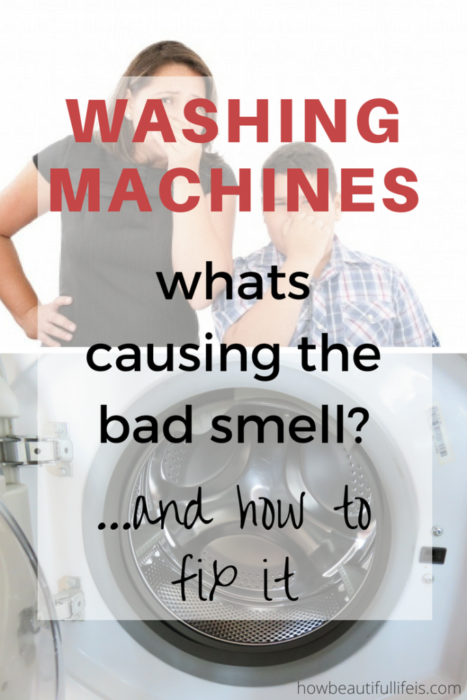



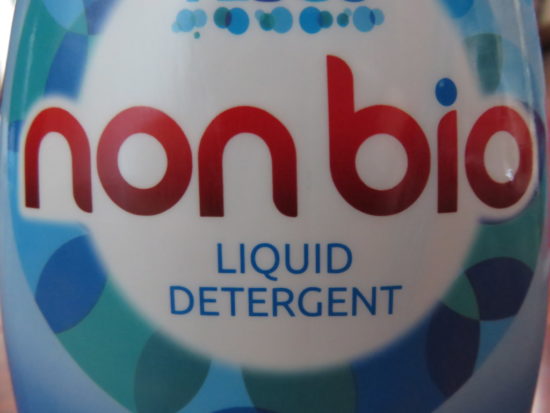

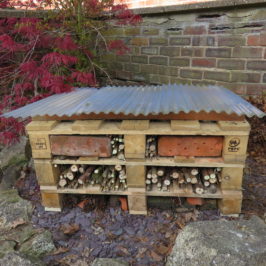
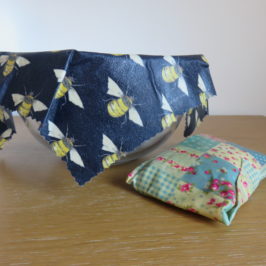
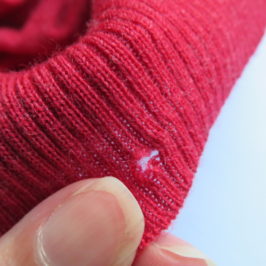
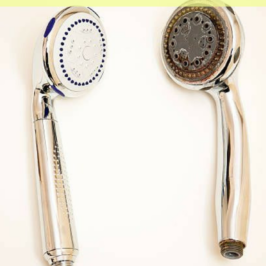

Leave a Reply